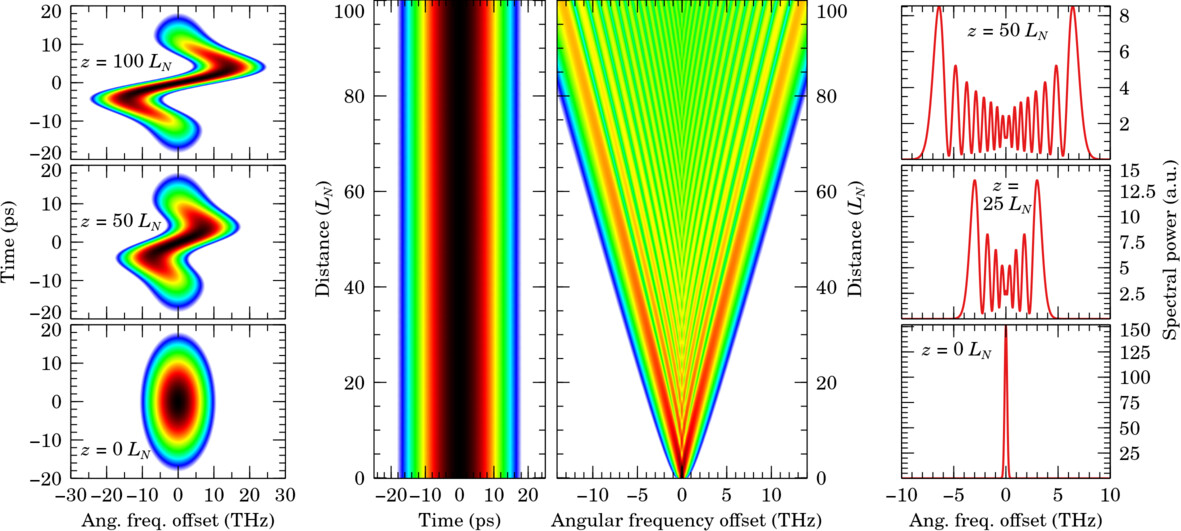Categories: Fiber optics, Nonlinear optics, Optics, Physics.
Self-phase modulation
In fiber optics, self-phase modulation (SPM) is a nonlinear effect that gradually broadens pulses’ spectra. Unlike dispersion, SPM creates frequencies: in the -domain, the pulse steadily spreads out in a distinctive “accordion” shape. Lower frequencies are created at the front of the pulse and higher ones at the back, giving S-shaped spectrograms.
A pulse envelope inside a fiber must obey the nonlinear Schrödinger equation, where the parameters and respectively control dispersion and nonlinearity:
By setting to neglect dispersion, solving this equation becomes trivial. For any arbitrary input pulse , we arrive at the following analytical solution:
The intensity in the time domain is thus unchanged, and only its phase is modified. Clearly, the largest phase shift increase occurs at the peak, where the intensity is . To quantify this, it is useful to define the nonlinear length , which gives the distance after which the phase of the peak has increased by exactly 1 radian:
SPM is illustrated below for the following Gaussian initial pulse envelope, with parameter values , , , and :
From earlier, we then know the analytical solution for the -evolution:
The instantaneous frequency , which describes the dominant angular frequency at a given point in the time domain, is found to be as follows for the Gaussian pulse, where is the phase of :
This result gives the S-shaped spectrograms seen in the illustration. The frequency shift thus not only depends on , but also on : the spectra of narrow pulses broaden much faster.
The interaction between self-phase modulation and dispersion leads to many interesting effects, such as modulational instability and optical wave breaking.
References
- O. Bang, Numerical methods in photonics: lecture notes, 2019, unpublished.
